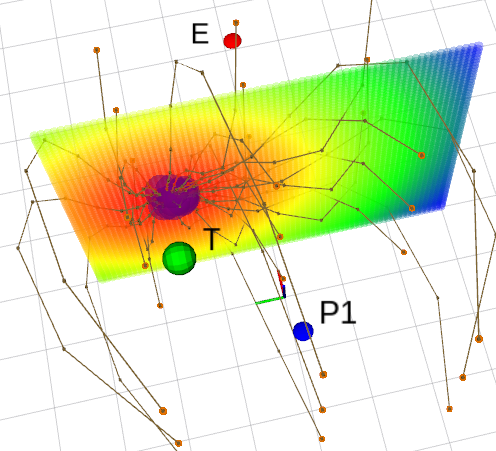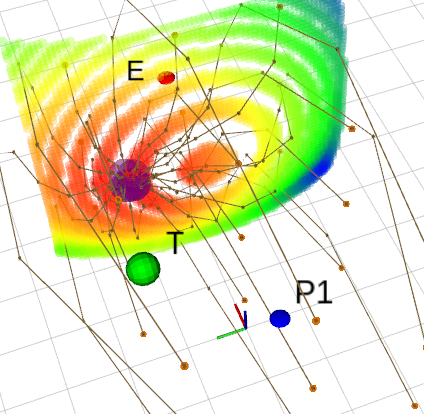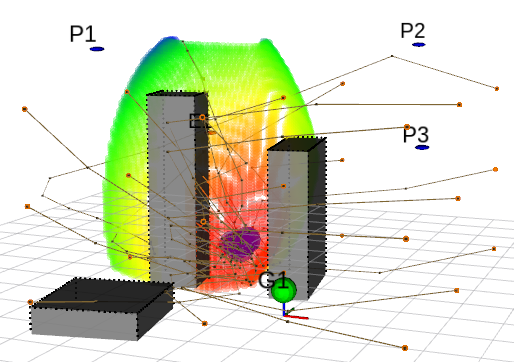A fleet of autonomous aerial vehicles protect a target from an evading intruder.
This project proposes to solve this problem using numerical solvers. To find the most likely interception point, the trajectory of the pursuers and evader are optimized simultaneously. From all the points where capture can happen - where a pursuer and the evader can reach simultaneously (Figure 1, interception surface) - the evader will choose the point closest to the target (Figure 1, hottest regions) to increase its chance of success. Therefore, the pursuers should move towards that point too.
In the optimization procedure, an initial interception guess (orange spheres) are iterated to decrease the path-distance to the target, while moving towards the feasible region.
When the drones have different speeds, the feasible region becomes a curved surface.
When there are multiple pursuers or obstruction, the feasible region becomes complex.
On a ThinkPad W530 laptop (2.7 GHz CPU, 8GB RAM).
| Node Density [node/m] | Number of Nodes | Convergence Rate [%] | Execution Time [ms/solution] |
|---|---|---|---|
| 0.33 | 6k | 70.01 ± 4.41 | 1.82 ± 0.07 |
| 0.40 | 8.9k | 70.49 ± 2.81 | 1.94 ± 0.12 |
| 0.50 | 14k | 57.17 ± 5.94 | 2.79 ± 0.11 |
| 0.67 | 25k | 58.97 ± 4.69 | 3.40 ± 0.17 |
| 1.00 | 59k | 46.76 ± 4.81 | 5.70 ± 0.28 |
| 2.00 | 247k | 87.86 ± 2.24 | 9.94 ± 0.40 |
| 3.33 | 689k | 77.56 ± 3.74 | 15.45 ± 0.35 |
Benchmark can be run without ROS:
cd pursuit
mkdir build
cd build
cmake .. -DCMAKE_BUILD_TYPE=Release
make
./benchmark 1.0 50To visualize problem, use ROS wrapper
cd catkin_ws
catkin_make -DCMAKE_BUILD_TYPE=Release && . devel/setup.bash
roslaunch pursuit_ros demo.launch

